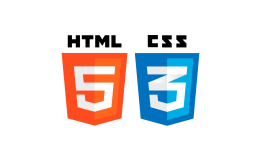Overview
HTML5 and CSS3 are the latest versions of the core web technologies used to structure and style web content. HTML5 introduces new semantic elements like article tag, section tag, and nav tag to improve the structure of web pages. It also adds new APIs, including support for audio, video, canvas for drawing, and offline storage, making it more powerful for web applications. CSS3 introduces a wide range of features for better styling, including media queries for responsive design, transitions, animations, and flexbox for better layout control.

Key Features (HTML5):
- New Semantic Elements: Improved page structure with elements like header tag, footer tag, section tag, and article tag
- Multimedia Support: Native support for audio and video without needing plugins.
- Canvas and SVG: For drawing graphics and animations directly on the web page.
- Offline Storage: Local storage and IndexedDB for offline web apps.
Key Features:(CSS3)
- Responsive Design: Media queries allow styles to be applied based on screen size.
- Transitions and Animations: Create smooth transitions between states and keyframe animations.
- Flexbox and Grid: Advanced layout systems that simplify the design of flexible, responsive layouts.
- Shadows, Gradients, and Border Radius: Modern UI design techniques without relying on images.
Use Cases:
- Structuring and styling web content
- Building responsive and visually engaging websites
- Rich multimedia web applications
